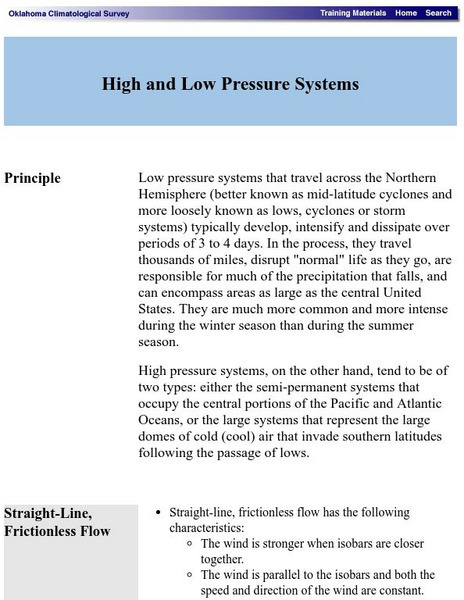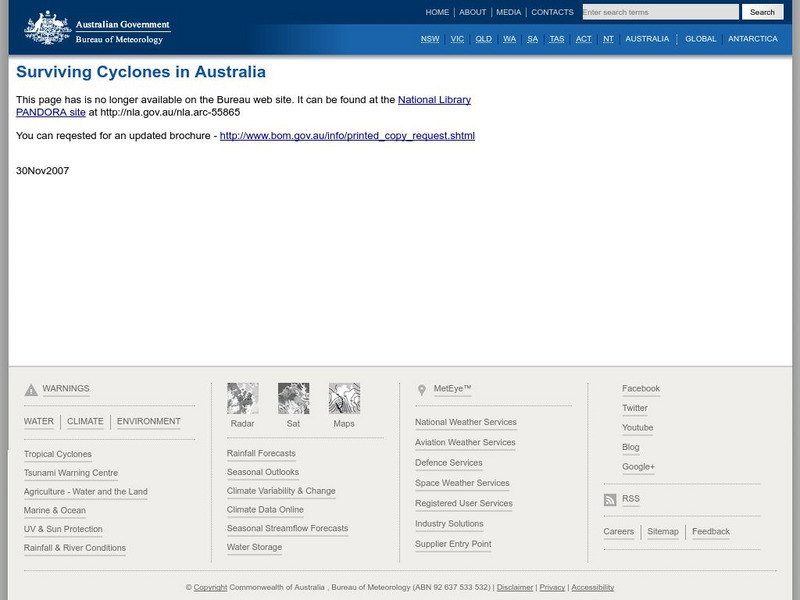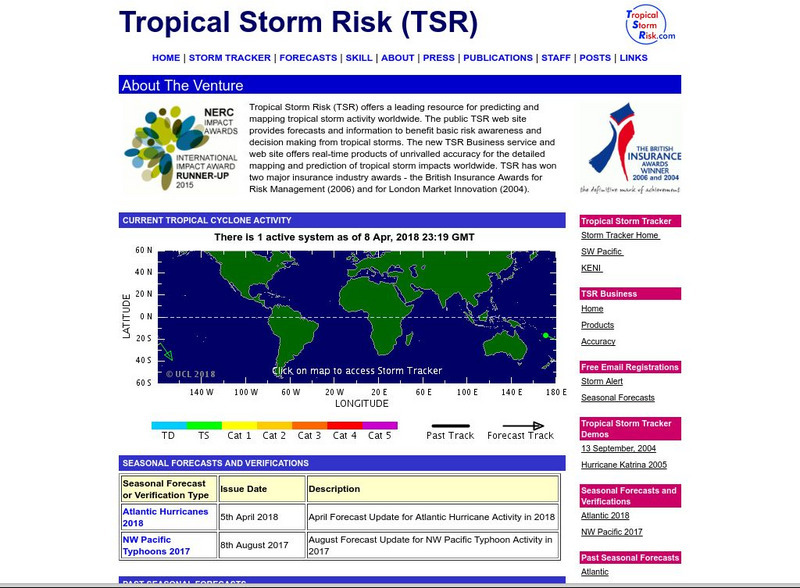University of Colorado
Great Red Spot Pinwheel
The great red spot on Jupiter is 12,400 miles long and 7,500 miles wide. In this sixth part of a 22-part series, individuals model the rotation of the Great Red Spot on Jupiter. To round out the activity, they discuss their findings as a...
NASA
How Does a Hurricane Form?
Young meteorologists examine the formation of a hurricane in a resource focused on severe weather conditions. Once they learn that a hurricane is also a tropical cyclone, and detail the different levels associated...
MENSA Education & Research Foundation
Hurricanes
Learn the ins and outs of hurricanes through a series of lessons answering, "What is a hurricane? How does it travel? How is one formed, measured, and named?" Information is presented through informative text and images, while...
Curated OER
Hurricanes
Your middle school meteorologists mull over hurricane facts while viewing this presentation. They learn about the physical characteristics and power of these low-pressure storms. They also discover the danger of hurricanes: freshwater...
Curated OER
Hurricane Happenings
Fourth and fifth graders engage in this impressive lesson which focuses on the causes of hurricanes and tropical storms. The use of video clips and Internet sites helps facilitate discussion amongst pupils which should lead them to a...
Curated OER
What are Natural Disasters?
There are several types of natural disasters: quakes, floods, avalanches, and more. This slide show gives a brief explanation of each at an elementary-aged child's level. There are no frightening photos from actual natural disasters,...
Curated OER
Cyclones
Students explore Earth science by researching natural disasters in class. In this cyclone lesson, students discuss the creation of cyclones and what their potential destruction can be in the wrong environment. Students read assigned text...
Curated OER
High winds hit Oman
Students read a text on a severe storm in Oman. They review vocabulary, practice reading strategies and complete a vocabulary matching exercise. Afterward, they design and write a poster to tell people what to do before, during and after...
Curated OER
X-Storms
Students compare and contrast 3 types of extreme storms. They obtain real-time and historical meteorological data regarding 2 specific storms and then analyze the data to determine what type of storm each was.
Curated OER
Hurricanes
Upper elementary meteorologists take a glance at what a hurricane is and how it is formed. Because this does not get into the differences in air pressure that drive the associated winds, it may not be useful for older learners. The...
Curated OER
Hurricane and Tornadoes Group Creative Writing
Creating science literacy through writing gets scholars thinking about the context of scientific terms! Learners collaborate to write a short story about hurricanes and tornadoes in a group. Students have 25 minutes to write the story,...
Curated OER
Hurricanes
Students investigate what conditions are favorable for a hurricane to occur. In hurricane lesson plan students view images of hurricane destruction and track a path of a hurricane.
Curated OER
The Lesson: Disaster
Students study natural disasters. In this Chinese and Burmese disasters lesson, students visit selected websites to discover information about earthquakes and cyclones and their devastating effect on the 2 countries. Students...
Curated OER
The Big Blow
Students identify and explain factors that contribute to extreme storms in the Great Lakes. In this investigative lesson students study the weather systems in the Great Lakes and compare cyclones to tropical storms.
Curated OER
Weather
In this weather activity, middle schoolers write the letter of the definition that best matches the term or phrase. Students answer several short answer questions as it relates to the components of weather, severe weather, and air...
Curated OER
Dealing with Disasters: Exploring a Cyclone Shelter
Learners participate in reading activities to discover what a cyclone is and how cyclones affect those parts of the world that they hit. They discuss what kind of shelter would be best to create in anticipation of a cyclone.
Curated OER
Natural Disaster Blooms Taxonomy
Students complete activities that lead to greater understanding of the variety of natural disasters that occur all over the world.
Curated OER
TE Activity: A Merry-Go-Round for Dirty Air
Students observe a simulation of a cyclone to examine a method of pollutant recovery in cleaning industrial air pollution. They examine how engineers develop technology to reduce air pollution and determine percentages for technology...
Curated OER
The Big Crush
Students examine weather maps from their state from the past few days. They examine the Highs and Lows on the maps to determine what kind of weather they produce. They use that information to better prepare for their activities and what...
Oklahoma Mesonet
University of Oklahoma: High and Low Pressure
This University of Oklahoma meteorology tutorial explores both high and low pressure systems--how they form and the different forms they take.
Other
Bureau of Meteorology: Surviving Cyclones
Fascinating coverage by the Australian government of cyclones, cyclone preparedness, and more.
Other
Tropical Storm Risk
The tropical storm risk tool allows you to track tropical cyclones around the world. Get data on their size, location and future course.
NOAA
Noaa: Tornadoes, Nature's Most Violent Storms
This page, put out by the National Weather Service, thoroughly explains the causes and types of tornadoes. Tornado safety is covered in the form of warning signs and what you can do to stay safe both in school and at home. The full...
National Geographic
National Geographic: Jupiter's Great Red Spot
After learning about cyclones and anticyclones, and relating this to the Great Red Spot on the surface of Jupiter, students create a model of the Red Spot and use ratios to determine its size. A vocabulary list with definitions is included.

























